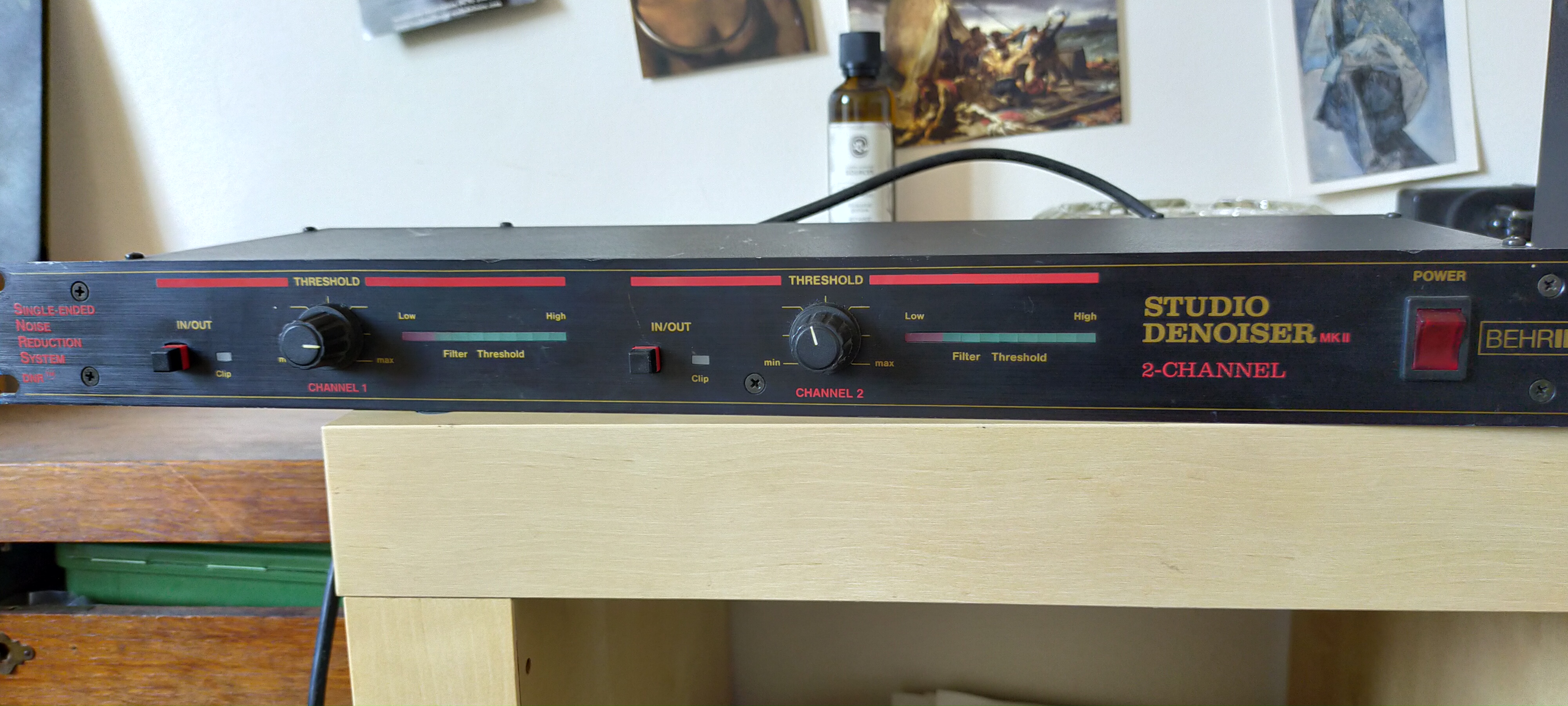
Please refer to conf/config.yaml for a reference of the possible options. You should see a file named debug.yaml with the relevant configuration for the debug sample set.Ĭommand line, for instance. Notice, under the conf folder, the dset folder contains the configuration files for The config file with all relevant arguments for training our model can be found under the conf folder. Generally, Hydra is an open-source framework that simplifies the development of research applicationsīy providing the ability to create a hierarchical configuration dynamically. We use Hydra to control all the training configurations.
#Denoiser 2 free software
The audio output of your VC software and then running python -m denoiser.live -in "Soundflower (2ch)" -out "NAME OF OUT IFACE" Training and evaluation Quick Start with Toy Example This can be achieved by selecting the loopback interface as You can also denoise received speech, but you won't be able to both denoise your own speechĪnd the received speech (unless you have a really beefy computer and enough loopbackĪudio interfaces). You can increase to -f 3 or more if needed, but each increase will add 16ms of extra latency. To do so, run python -m denoiser.live -f 2 In that case you can trade overall latency for speed by processing multiple frames at once. You might experience issues with DDR3 memory.
#Denoiser 2 free pro
You can try exiting all non required applications.ĭenoiser was tested on a Mac Book Pro with an 2GHz quadcore Intel i5 with DDR4 memory. In that case, you will see an error message in your terminal warning you that denoiser Troubleshooting bad quality in separationĭenoiser can introduce distortions for very high level of noises.Īudio can become crunchy if your computer is not fast enough to process audio in real time.
#Denoiser 2 free windows
Note that on Windows you will need to replace python by python.exe. Then once you have spotted your loopback interface, just run python -m denoiser.live -out INDEX_OR_NAME_OF_LOOPBACK_IFACEīy default, denoiser will use the default audio input. You can list the available audio interfaces with python -m sounddevice.

Have a a soundcard that supports loopback (for instance Steinberg products), you can try For denoiser interface as Playback destination which will output the processed audio stream on the sink we previously created.Īt the moment, we do not provide official support for other OSes. Python -m denoiser.live -out INDEX_OR_NAME_OF_LOOPBACK_IFACE and the software you want to denoise for (here an in-browser call), you should see both applications. This will add a Monitor of Null Output to the list of microphones to use. Pacmd update-sink-proplist denoiser scription =denoiser Pacmd load-module module-null-sink sink_name =denoiser You can use the pacmd command and the pavucontrol tool: Watch our live demo presentation in the following link: Demo. In your favorite video conference call application, just select "Soundflower (2ch)"
#Denoiser 2 free mac os
On Mac OS X, this is provided by Soundflower.įirst install Soundflower, and then you can just run python -m denoiser.live Need a specific loopback audio interface. If you want to use denoiser live (for a Skype call for instance), you will Pip install -r requirements_cuda.txt # If you have cuda Live Speech Enhancement

Pip install -r requirements.txt # If you don't have cuda

We recommend usingĪ fresh virtualenv or Conda environment. Through pip (you just want to use pre-trained model out of the box)ĭevelopment (if you want to train or hack around)Ĭlone this repository and install the dependencies. Installationįirst, install Python 3.7 (recommended with Anaconda). The proposed model is based on the Demucs architecture, originally proposed for music source-separation: ( Paper, Code). It is optimized on both time and frequency domains, using multiple loss functions.Įmpirical evidence shows that it is capable of removing various kinds of background noise including stationary and non-stationary noises, as well as room reverb.Īdditionally, we suggest a set of data augmentation techniques applied directly on the raw waveform which further improve model performance and its generalization abilities. The proposed model is based on an encoder-decoder architecture with skip-connections. In which, we present a causal speech enhancement model working on the raw waveform that runs in real-time on a laptop CPU.

We provide a PyTorch implementation of the paper: Real Time Speech Enhancement in the Waveform Domain. Real Time Speech Enhancement in the Waveform Domain (Interspeech 2020)


 0 kommentar(er)
0 kommentar(er)
